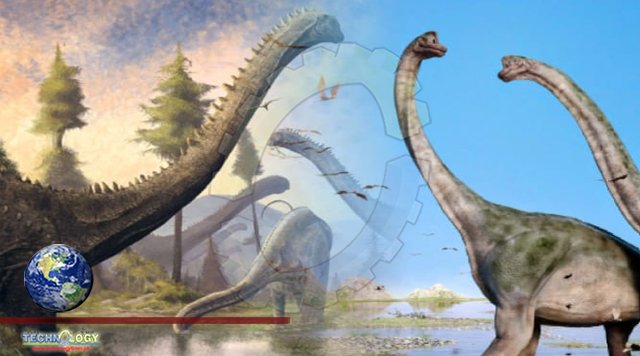Researchers have solved a long-standing mystery by figuring out how sauropod dinosaurs, such as the Brontosaurus and Diplodocus, supported their enormous bodies on land.

A team headed by the University of Queensland and Monash University utilized engineering and techniques 3D modeling to digitally reconstruct and evaluate the functionality of various sauropods’ foot bones. According to Dr. Andréas Jannel, who conducted the study as part of his Ph.D. studies at UQ’s sauropod dinosaurs Lab, the researchers discovered that sauropods’ hind feet had a soft tissue pad under the “heel,” cushioning the foot to absorb their enormous weight“We’ve finally confirmed a long-suspected idea and we provide, for the first time, biomechanical evidence that a soft tissue pad – particularly in their back feet – would have played a crucial role in reducing locomotor pressures and bone stresses,” Dr. Jannel stated. “It is mind-blowing to imagine that these giant creatures could have been able to support their own weight on land.” Sauropods were the world’s largest terrestrial animals, roaming the planet for over 100 million years. They were initially believed to have been semi-aquatic with their enormous weight supported by water buoyancy. However, this hypothesis was disproved after the discovery of sauropod tracks in terrestrial deposits in the middle of the twentieth century.
According to Dr. Olga Panagiotopoulou of Monash University, it had also been believed that sauropods possessed feet similar to those of an elephant today. “Popular culture – think Jurassic Park or Walking withs Sauropod dinosaurs – often depicts these behemoths with almost-cylindrical, thick, elephant-like feet,” Dr. Panagiotopoulou said. “But when it comes to their skeletal structure, elephants are actually ‘tip-toed’ on all four feet, whereas sauropods have different foot configurations in their front and back feet. Sauropod’s front feet are more columnar-like, while they present more ‘wedge high heels’ at the back supported by a large soft tissue pad.”The researchers now plan to use 3D modeling and engineering methods to make further discoveries. “I’m keen to apply a similar method to an entire limb and to include additional soft tissue such as muscles, which are rarely preserved in fossils,” Dr. Jannel said. “We’re also excited to study the limbs and feet of other prehistoric animals. This should allow us to answer different questions about the biomechanics of extinct animals and better understand their environmental adaptations, movement, and lifestyle.”
Source: This news is originally published by scitechdaily